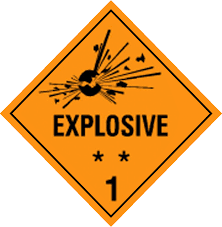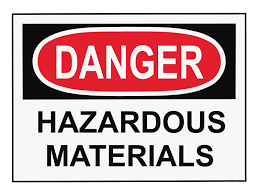Hazardous or dangerous goods are materials or items with inherent hazardous properties which if not properly controlled, can present a potential hazard to the health and well-being of all living organisms and the safety of the environment. These goods can be solids, liquids or gases. They can be hot or cold, pungent or odorless, transparent or colored and their hazardous effects can be anything from minimal to fatal.
They may be pure chemicals, mixtures of substances, manufactured products or individual articles on their own. The IATA FAQ page explains in more helpful words that they are “items that may endanger the safety of an aircraft or persons on board the aircraft.
A typical example of how a dangerous goods can cause problems for humans is the explosion that happened at a Lebanese port when about 2,750 tons of ammonium nitrate stored at the port caught fire. This explosion killed hundreds of people and injured thousands; it literally leveled everything on its path.
In 2014, a South Korean shipper incurred a $72,000 fine for non-compliant packaging and labeling on a shipment of paints and solvents. Around the same time, an Ohio-based distribution company failed to appropriately label packages and complete shipping paperwork for an air shipment of corrosive wood cleaner and paid $63,000 for its negligence.
Shipping dangerous goods is a complex and highly regulated process, and it can be difficult, for a variety of reasons, to get compliance buy-in from everyone in your company involved with the shipping process. However, as many businesses have discovered, non-compliance with International Air Transport Association (IATA) and DOT regulations is expensive.
Some classification of dangerous goods include;
Class 1: Explosives
- Fireworks, airbag inflators, ammunition, etc.
Class 2: Gases
- Aerosols, fire extinguishers, propane cylinders, etc.
Class 3: Flammable liquids
- Paints, lacquers, alcohols, etc.
Class 4: Flammable solids, spontaneous combustibles, and “dangerous when wet” materials
- Matches, carbon, sodium batteries, etc.
Class 5: Oxidizers
- Hydrogen peroxide, ammonium nitrate fertilizers, pool chlorine, etc.
Class 6: Toxic or infectious substances
- Medical waste, dyes, pesticides, etc.
Class 7: Radioactive materials
- Density gauges, medical treatment products, uranium, etc.
Class 8: Corrosives
- Acids/acid solutions, batteries, iodine, etc.
Class 9: Miscellaneous
- Dry ice, internal combustion engines, first aid kits, etc.
Many of these classes are divided into sub-classifications according to various properties such as temperature sensitivity (also known as flash point), toxicity, and flammability.
To successfully ship dangerous goods, below are tips that can help;
1. Have a detailed information on the item:
Every product has an information sheet where you can get detailed information about the product. For every goods dangerous goods, there is what we call Material Safety Data Sheet (MSDS); this sheet gives you an indepth information on the product and makes viable suggestions on its handling. Get this sheet from the manufacturer or the shipper and study it to enable you or the airline make decisions.
2. Accurate packing and labeling:
There are three packing groups corresponding to the level of danger involved:
- Packing Group I (indicated by the letter “X” in shipping codes)—Great Danger
- Packing Group II (indicated by a “Y”)—Medium Danger
- Packing Group III (indicated by a “Z”)—Minor Danger
Each of the packing group provides specifications for unit-size, quantitative limits, packaging closure instructions, acceptable packaging materials, single or combination-packaging limitations, and more.
Once proper packaging is complete, the package must be labeled and placarded appropriately. Each dangerous goods class has designated signage including, among other things, color-coding, warning placards, and directional indicators. You must ensure that you pack your cargo adequately with the appropriate packing materials. Also, ensure the proper cushioning and lashing of the cargo so that it does not move inside the container and cause any leakages or damage. If hazardous materials and non-dangerous goods are transported in the same container, everything should be tightly packed, braced, and secured for transportation.
3. Safe Handling and Training of personnel:
Once packing and labeling requirements have been met, the appropriate documentation forms required for the given modes of transportation (air, ground, and sea) must be completed. This final, essential step verifies the qualitative and quantitative details of the shipments and declares that the shipment is compliance with both international and national requirements. It is very important that all people involved in the chain of shipment are well trained and aware of the specificity of dangerous goods. From the cargo handlers, to the packers, equipment operators, documentary staff and truckers, everyone needs to be suitably trained not only in their job-specific tasks but also in the knowledge of handling dangerous goods.
If you need an organization that can handle shipment of your dangerous goods, contact Edas Global Supply Chain Limited; we handle all your shipping requirements from origin to destination seamlessly.
Email us today via info@edasglobalsupplychain.com; or call +2347089921886.


